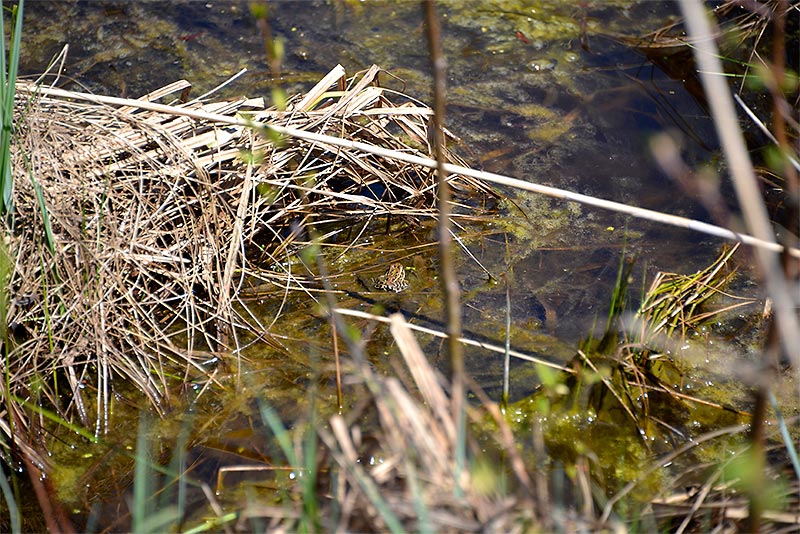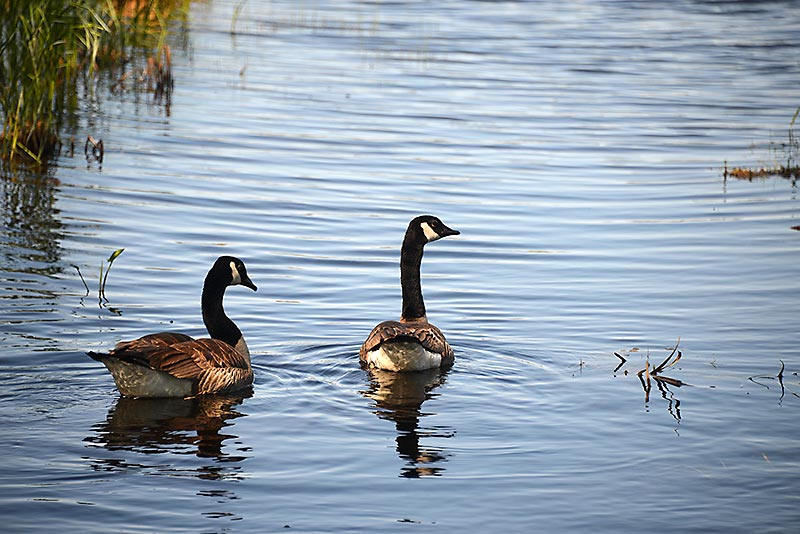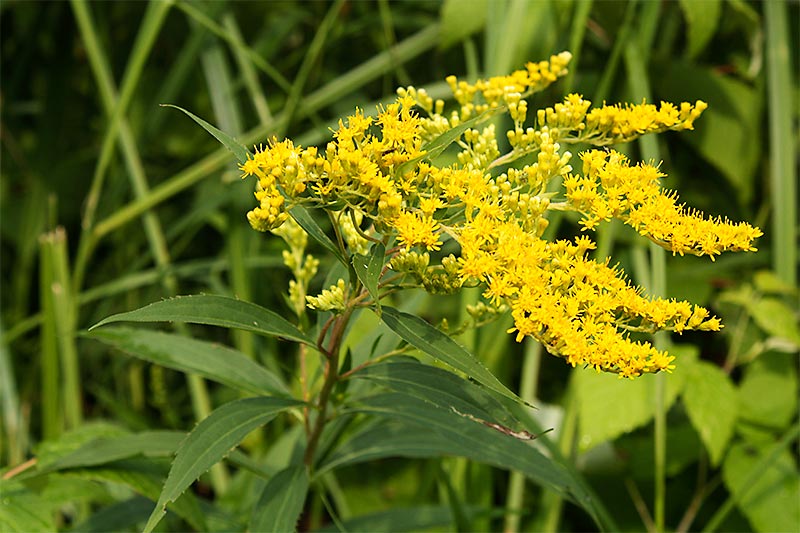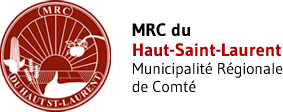Discover the natural diversity of the reserve
To further explore the biodiversity of the reserve, a guided Rabaska canoe or sea kayak is required. Marvel at the natural beauty that this land contains more than 1,316 hectares.
Fauna and flora
Thanks to its location in southern Quebec and near Lake Saint-François, the Réserve nationale de faune du Lac-Saint-François is particularly notable for its rich flora and fauna.
Canards Illimités Canada has largely contributed in 1980 to the land management of the reserve to promote nesting waterfowl. There we find more than 650 plant species, of which about twenty are rare or endangered and, in some cases, unique in Quebec. The environment offers food and shelter to many animal species, many endangered. There have been 23 species of amphibians and reptiles identified, 237 species of birds and 35 species of mammals.
Les Amis de la réserve nationale de faune du Lac-Saint-François also contribute to recreate favorable habitats for some species. The Osprey (bird of prey) is particularly pampered with a platform in a strategic location, close to the water, to fish for food. Three couples have settled in recent years and gave birth to chicks.
The Canadian Wildlife Service has inventoried the site and created a list of animals and plants that can be found on the territory. This list can be used for your information or to record your own observations. You can obtain free copies of the list as well as ÉPOQ count sheets (regional database) at the reception desk.
Federal Territory
In 1972, the Canadian Wildlife Service acquired, in the township municipality of Dundee, a mosaic of wetland and upland habitats, including sedge and cattail marshes, wooded swamps populated by Red Maple stands, and well-drained dry woods featuring communities dominated by hawthorn, hickory and Sugar Maple.
Covering an area of over 1,316 hectares, this area has received in 1978 the official status of National reserve and in 1987 was recognized under the Ramsar International Convention as a globally important ecosystem in order to protect the biodiversity of wetlands and to conserve rare and endangered species.
In the 1980s, Canards Illimités Canada&, contributed to land planning Lake Saint-François, inside and outside the boundaries of the reserve. These many facilities contribute to the presence of various animal and plant species.
The Réserve nationale de faune du Lac-Saint-François is located on the south shore of the St. Lawrence River, 40 km upstream of Salaberry-de-Valleyfield. Since 1993, a service contract entrusted to Les amis de la Réserve nationale de faune du Lac-Saint-François, non-profit organization mandated to maintain this territory, to facilitate access to the public and educate them the public in regard to the importance of wetland conservation.
Thirteen species of waterfowl, including the Canada Goose, the Mallard, the American Black Duck, the Wood Duck and the Lesser Scaup, nest in the NWA. The marshes and adjacent open-water areas are used by more than 5,000 ducks in the spring and by more than 8,000 ducks during the fall migration. Of the 237 listed bird species, many landbirds and waterbirds nest in the NWA, including Northern Waterthrush, Veery and Sandhill Crane. The NWA is also home to one of the largest Sedge Wren populations in Canada. The Four-toed Salamander, the Blanding’s Turtle and the Snapping Turtle are among the amphibians and reptiles observed here. The Muskrat, the Meadow Jumping Mouse, the Big Brown Bat, the Beaver, the White-tailed Deer and the Coyote are some of the mammal species present. The site is also an important habitat for species at risk in the region, such as the Yellow Rail, the Map Turtle and the Butternut.
The Réserve nationale de faune du Lac-Saint-François is an ideal place to learn about the wetlands by the discovery of its marshes and swamps. A multitude of plants and creatures reside there. In a very unique environment, by foot, Rabaska and sea kayaking, just breathe, observe and discover wonderful plants and animals.
Friends of the reserve warmly invite you. For more information, please visit the following websites:
For more information, please visit our Facebook and Instagram page
Dogs
Dogs are admitted on the trails of Réserve nationale de faune du Lac-Saint-François. They must be on a leash, all the time, and the owners are responsible for picking up what they leave behind them. However, the marsh and its meanders are a place of conservation of different water birds who are nesting in this area. Dogs are not allowed on the water in the Reserve because they could scare the species of this ecosystem.














Comments are closed.